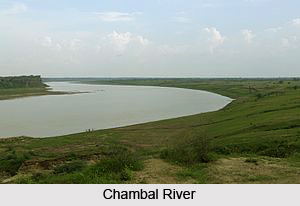 Dholpur district, according to the epics, was initially known as Dhawalgiri and later on Dhaulagir, and now as Dholpur. Before the battle of Mahabharata this whole area was under the Yadavas. The key to the ancient history of Dholpur is the ruins of strong fort which is situated on the bank of river Chambal.
Dholpur district, according to the epics, was initially known as Dhawalgiri and later on Dhaulagir, and now as Dholpur. Before the battle of Mahabharata this whole area was under the Yadavas. The key to the ancient history of Dholpur is the ruins of strong fort which is situated on the bank of river Chambal.
During the second phase of ancient history, the ruins of Mahabharata period could be seen and around the temple of Muchukund ji. According to the Shastras Muchukund was a very illustrious king before Krishna. During the war between Devtas and Danavas, King Muchukund sided with the devtas and was instrumental in their victory. Indra was so pleased that he asked Muchukund to have a boon. Muchukund was so tired that he asked Indra to allow him to sleep peacefully and if anyone should dare to wake him up, Muchukund`s angry gaze would burn him to ashes. Mahabharata reveals that during one of the battles with the demons Krishna ran away to save his life from one of the demons and came to the spot where Muchukund was sleeping. He put his pitamber on the sleeping Muchukund. The demon thinking him to be Krishna woke him up, and thus the demon was burnt to ashes, and thus the life of Krishna was saved. The event took place, in a spot very near to the Muchukund Ji`s temple, where the ruins of old palaces still exist. The appearance of these, however does not seem to be that old.
The history of Stone Age dates back to the Stone Age. The antiquities found in Dholpur can be datable to pre-Gupta period, and the site remained under the occupation up to the late medieval period.
Brahmnism and Jainism both were prevailing in the society during the early medieval period. The discoveries of Naga and Nagis figures from Dholpur put the considerable influence of Nagavansies of Padamvaties over this area. They were succeeded by Guptas as evidences reported from the excavations at Donder Khera. The figures of Nagas and Nagis sculptures all belong to tenth to twelfth century A.D. An eleventh century panchayatana temple called as Jogni-Jogana situated near Sone-ka-Gurja is an important edifice of this period.



















